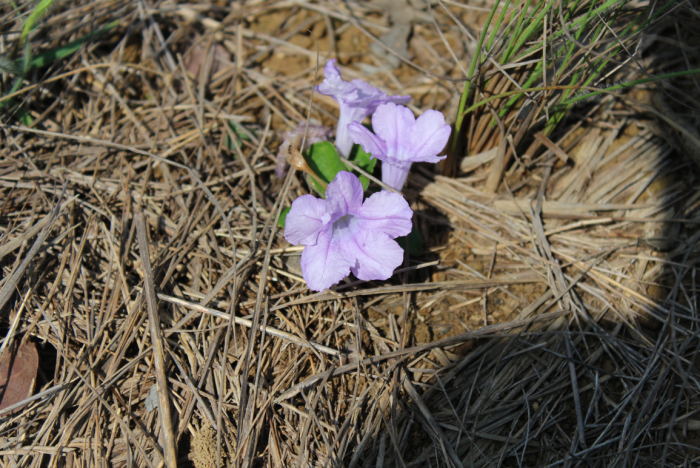Minnieroot
(Ruellia bulbifera)
Minnieroot (Ruellia bulbifera)
/
/

© Lívia Ribeiro
CC BY-SA 4.0
Image By:
© Lívia Ribeiro
Recorded By:
Copyright:
CC BY-SA 4.0
Copyright Notice:
Photo by: © Lívia Ribeiro | License Type: CC BY-SA 4.0 | License URL: http://creativecommons.org/licenses/by-sa/4.0/ | Uploader: liviaribeiro_bio | Publisher: iNaturalist |

Estimated Native Range
Summary
Ruellia bulbifera, commonly known as Minnieroot, Popping Pod, or Snapdragon Root, is a perennial herb native to countries across South America. It thrives in a variety of habitats including disturbed areas, roadsides, and riparian zones, as well as open woodlands and forest edges. This species typically grows rapidly to a height and width of 1.5-3 feet (0.46-0.9 meters), forming clumps of narrow, lance-shaped leaves. The plant is known for its violet or purple flowers that are quite showy, blooming profusely in the summer and fall, attracting pollinators such as bees and butterflies.
Minnieroot is valued for its ornamental flowers and its ability to adapt to a range of soil types, including clay, loam, or sandy soils. It is often used in tropical and subtropical gardens for border planting or as a ground cover. The plant prefers full sun to part shade and requires medium amounts of water with good drainage. While it can be a prolific self-seeder, it is not typically invasive outside its native range. However, gardeners should be aware of its potential to spread in ideal conditions. Ruellia bulbifera is also known for its interesting seed pods that burst open when touched, hence the name "Popping Pod."CC BY-SA 4.0
Minnieroot is valued for its ornamental flowers and its ability to adapt to a range of soil types, including clay, loam, or sandy soils. It is often used in tropical and subtropical gardens for border planting or as a ground cover. The plant prefers full sun to part shade and requires medium amounts of water with good drainage. While it can be a prolific self-seeder, it is not typically invasive outside its native range. However, gardeners should be aware of its potential to spread in ideal conditions. Ruellia bulbifera is also known for its interesting seed pods that burst open when touched, hence the name "Popping Pod."CC BY-SA 4.0
Plant Description
- Plant Type:
- Height: 1.5-3 feet
- Width: 1.5-3 feet
- Growth Rate: Rapid
- Flower Color: Purple
- Flowering Season: Summer, Fall
- Leaf Retention: Evergreen
Growth Requirements
- Sun: Full Sun, Part Shade
- Water: Medium
- Drainage: Medium
Common Uses
Border Plant, Butterfly Garden, Deer Resistant, Drought Tolerant
Natural Habitat
Disturbed areas, roadsides, riparian zones, open woodlands, and forest edges
Other Names
Common Names: Popping Pod , Snapdragon Root
Scientific Names: Ruellia bulbifera , Dipteracanthus tuberosus , Ruellia humilis , Ruellia humilis , Ruellia loefgrenii
GBIF Accepted Name: